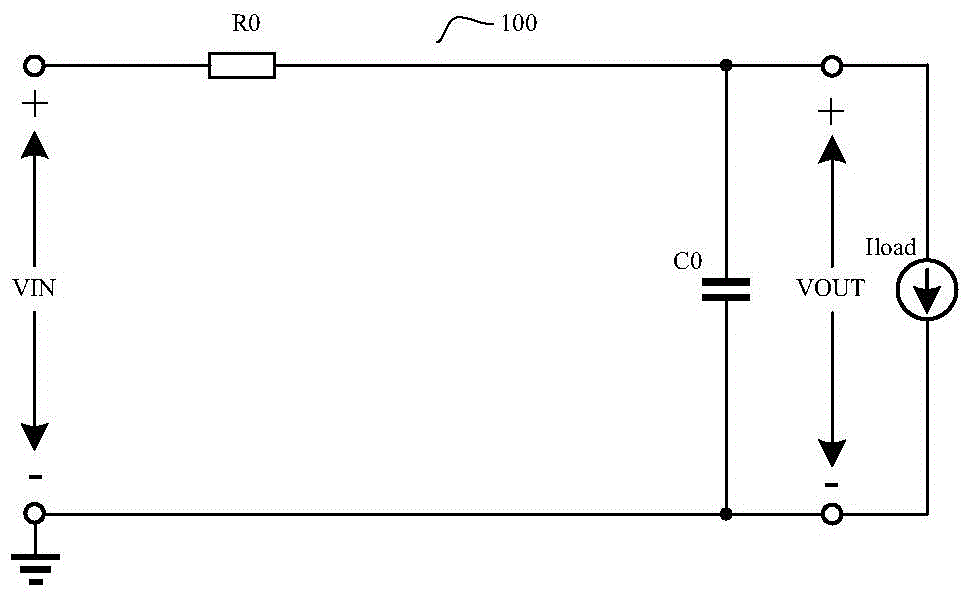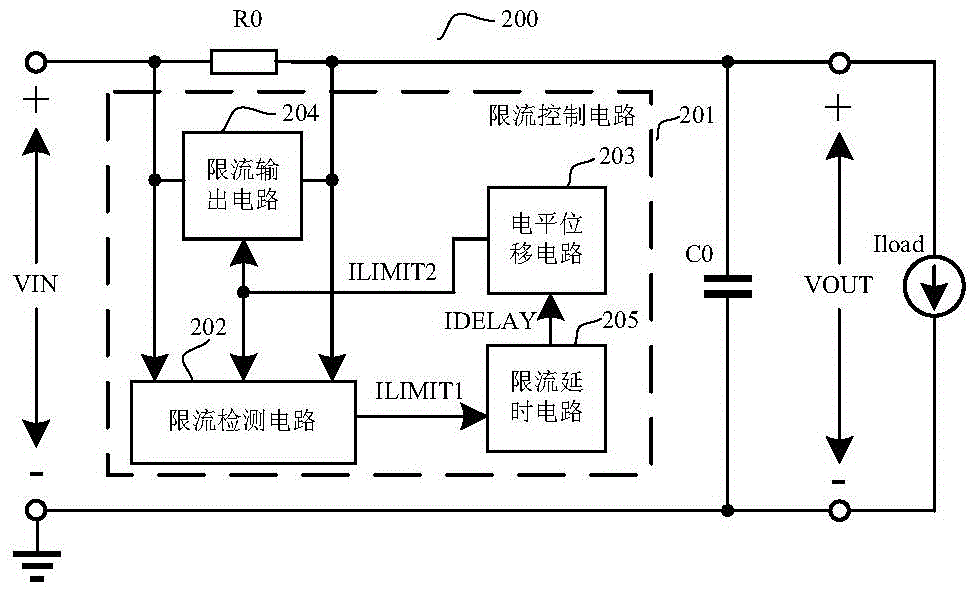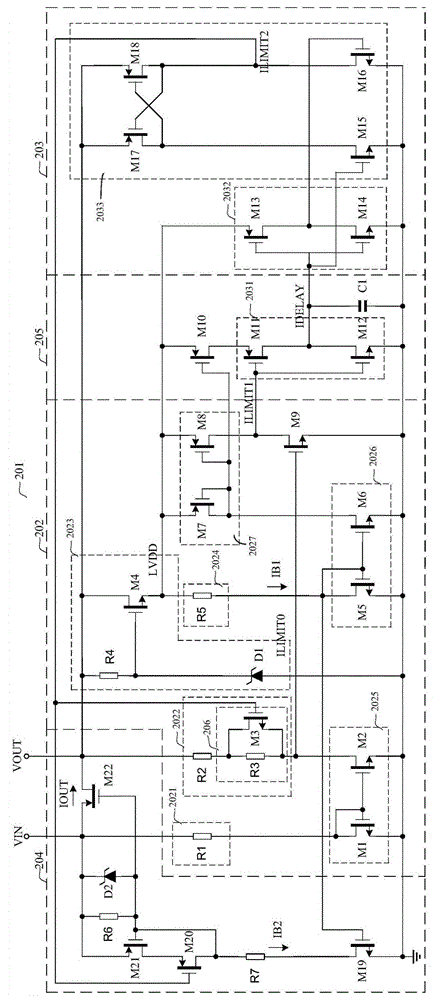Power charging circuit
A charging circuit and power supply technology, applied in battery circuit devices, circuit devices, current collectors, etc., can solve problems such as overcurrent and increased charging current.
- Summary
- Abstract
- Description
- Claims
- Application Information
AI Technical Summary
Problems solved by technology
Method used
Image
Examples
no. 1 example
[0094] refer to figure 2 , figure 2 A schematic circuit structure diagram of the power charging circuit 200 of the first embodiment is shown. The power charging circuit 200 includes a current limiting resistor R0, a current limiting control circuit 201 and an output capacitor C0. The power charging circuit 200 is used to provide a load current Iload to a load.
[0095] Among them, the first terminal of the current limiting resistor R0 is connected to the positive terminal of the input voltage; the first terminal of the output capacitor C0 is connected to the second terminal of the current limiting resistor R0, and the second terminal of the output capacitor C0 is connected to the negative terminal of the input voltage and grounded. The voltage between the positive terminal and the negative terminal of the input voltage is the input voltage VIN, and the voltage across the output capacitor C0 is the output voltage VOUT; the input terminal of the current-limiting control circu...
no. 2 example
[0144] refer to Figure 5 , Figure 5 A schematic circuit structure diagram of the power charging circuit 200 of the second embodiment is shown. The power supply charging circuit 200 of the second embodiment is basically the same as that of the first embodiment, the difference is that the current limiting delay circuit is omitted in the current limiting control circuit 201, and the level shift circuit 203 directly controls the first current generated by the current limiting detection circuit 202. The current limit control signal ILIMIT1 is level-shifted to obtain a second current limit control signal ILIMIT2 .
[0145] refer to Figure 6 , Figure 6 A schematic diagram of a specific circuit structure of the current limiting control circuit 201 according to the second embodiment of the present invention is shown. and image 3 The structure of the first embodiment is basically the same, except that the current-limiting delay circuit and the current-limiting hysteresis circu...
no. 3 example
[0159] refer to Figure 8 , Figure 8 A schematic circuit structure diagram of the power charging circuit 200 of the third embodiment is shown. The power supply charging circuit 200 of the third embodiment is basically the same as the first embodiment, the difference is that the current-limiting hysteresis circuit is omitted in the current-limiting detection circuit 202 of the third embodiment, which can be obtained from Figure 9 Seen in the specific circuit configuration shown.
[0160] about Figure 8 and Figure 9 For the circuit structure shown, reference may be made to the relevant description of the first embodiment, and details are not repeated here.
[0161] refer to Figure 10 , Figure 10 show Figure 9 The working signal waveform of the specific circuit shown. Figure 10 The signals contained in are: input voltage VIN, output voltage VOUT, internal power supply voltage LVDD, first current-limiting control signal ILIMIT1, delay signal IDELAY, second current-...
PUM
 Login to View More
Login to View More Abstract
Description
Claims
Application Information
 Login to View More
Login to View More - R&D
- Intellectual Property
- Life Sciences
- Materials
- Tech Scout
- Unparalleled Data Quality
- Higher Quality Content
- 60% Fewer Hallucinations
Browse by: Latest US Patents, China's latest patents, Technical Efficacy Thesaurus, Application Domain, Technology Topic, Popular Technical Reports.
© 2025 PatSnap. All rights reserved.Legal|Privacy policy|Modern Slavery Act Transparency Statement|Sitemap|About US| Contact US: help@patsnap.com



